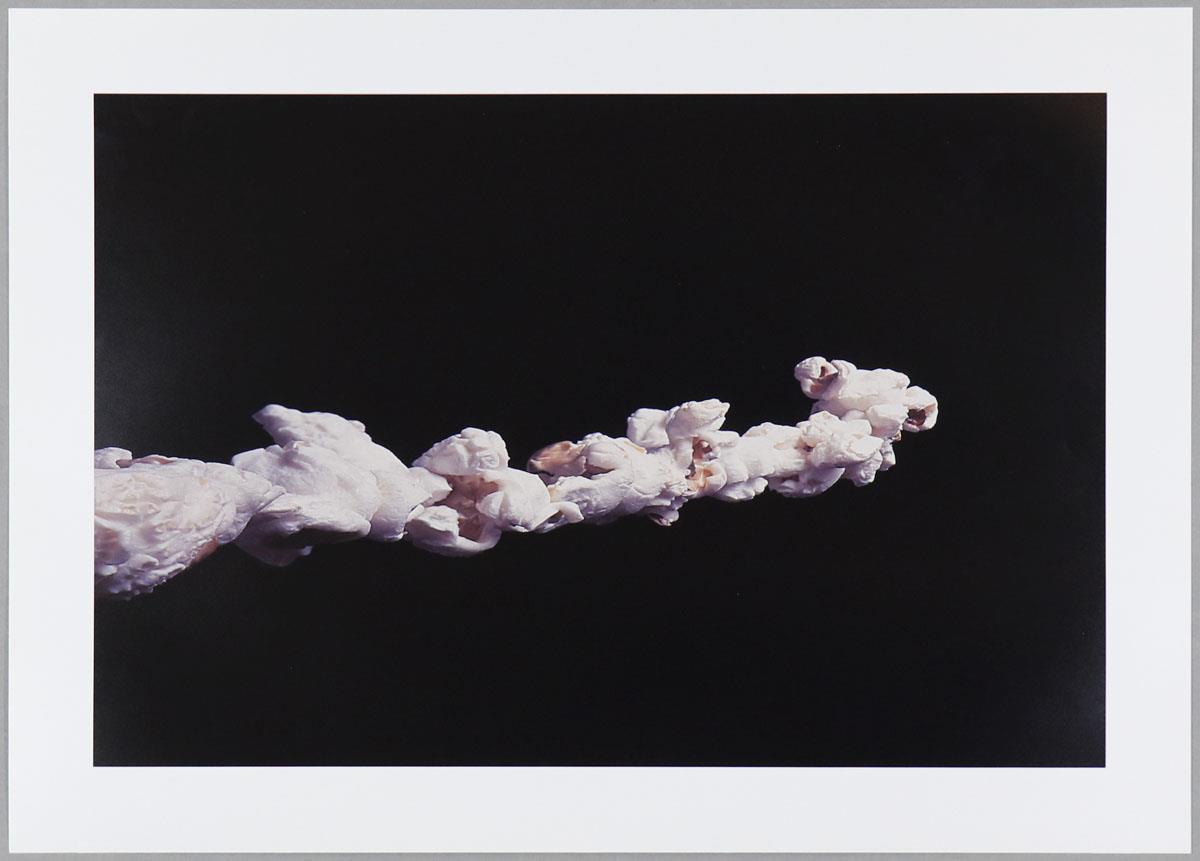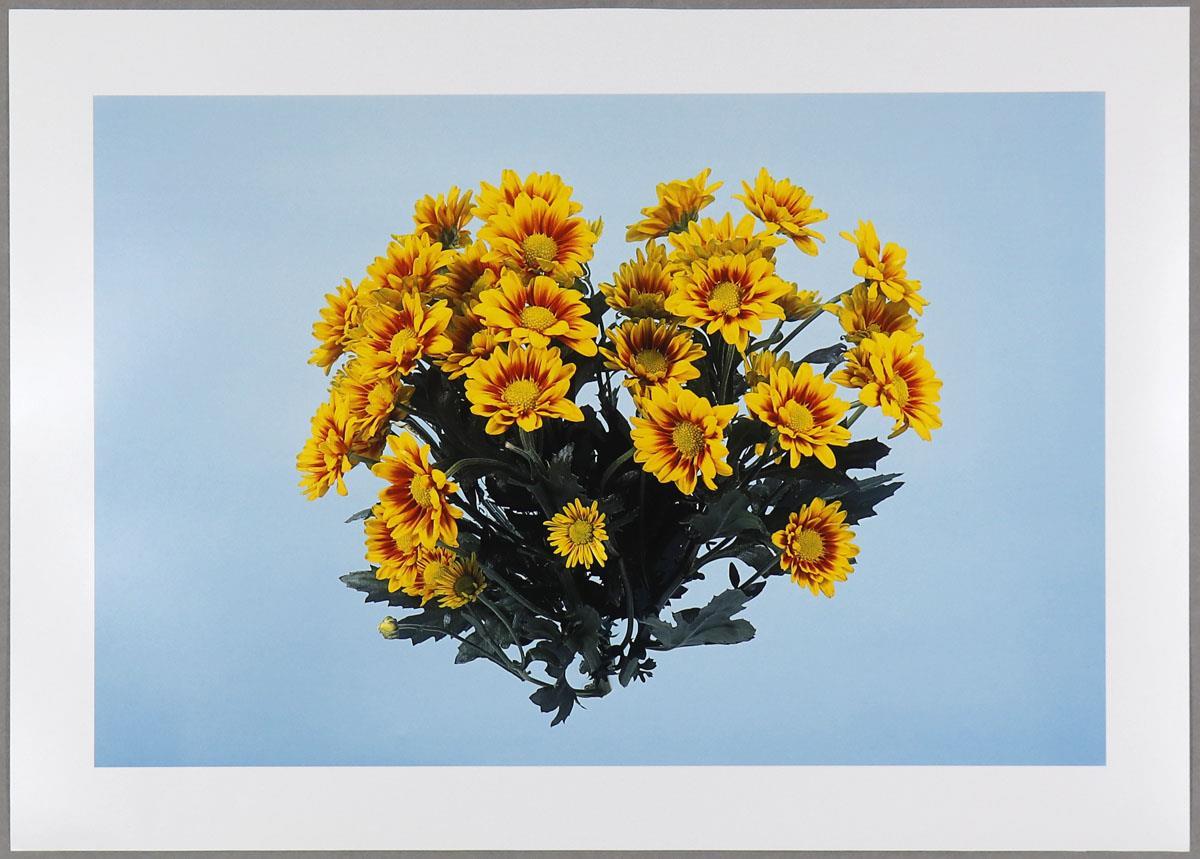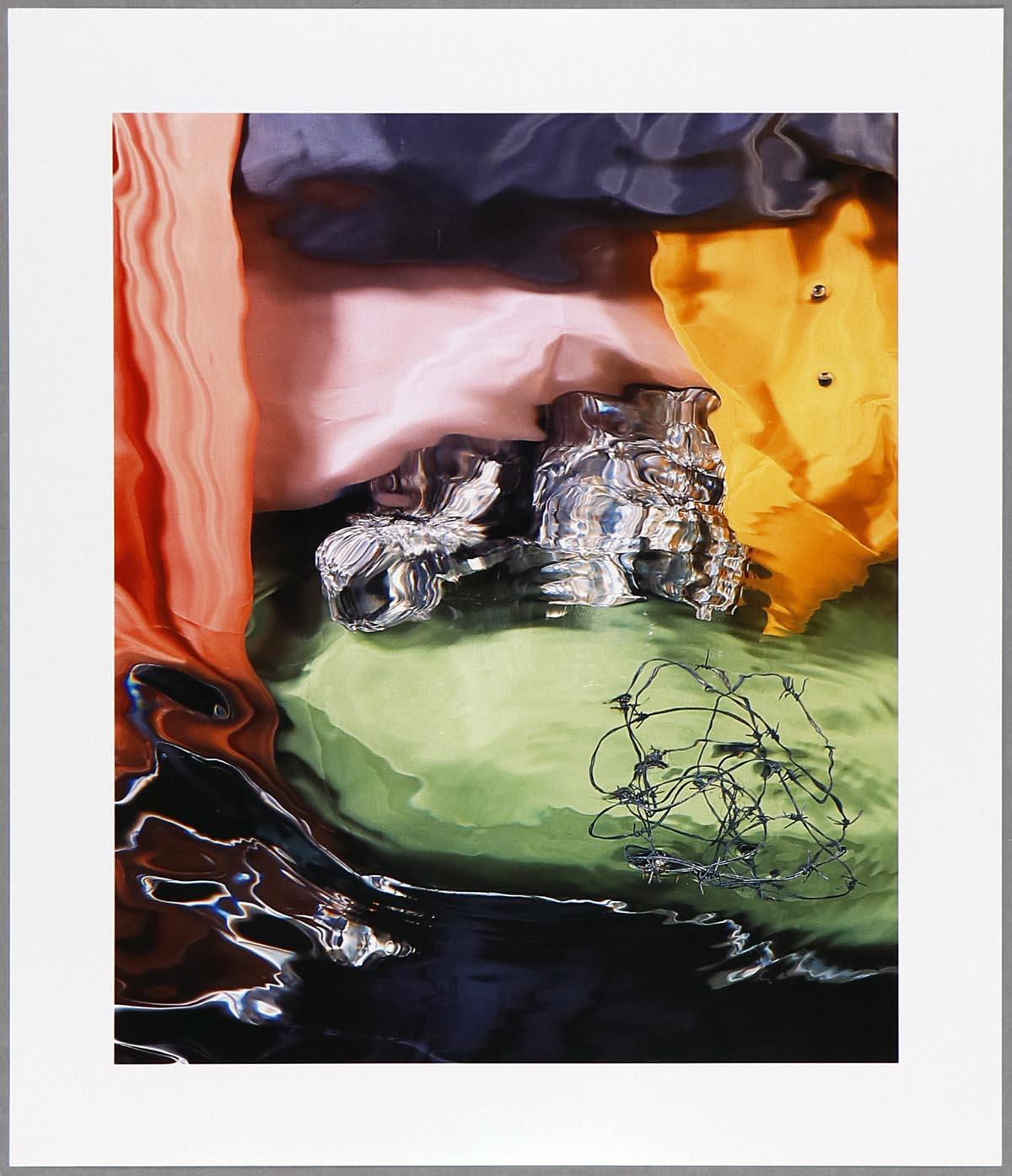By the seventies and stretching into the eighties, a new group of artistic talent was emerging on both sides of the Atlantic. Born in the post war years, it was generation who grew up in a time of unpresented social mobility, prosperity and hopes of a brighter future; all delivered and sugar-coated by the media landscape of newspapers, glossy magazines, billboards and TV. The young artists, now in their twenties, graduated into a different world agenda trying to manage high inflation, recession and oil-crises. Exploring the media and culture - and the unfulfilled promises - eventually paved the way to a range of new talent critical of the current social agenda. Working within various mediums such as sculpture and photography, London-based
Boyd Webb would rise to fame as one of the noteworthy artists of the eighties.
Unlike his contemporaries within photography in New York, who gained prominence through works mixing and portraying culture and everyday life - often having a documentary and autobiographical quality to it - Webb’s early approach was different. Instead, he presented scenes of social satire that were set against ironic text and titles, prompting a sense of dislocation in the viewer. In ‘The Light and Shade of Experience’ (1979), a man sits on the shoulders of another man whilst changing a light bulb hanging from above, in an institutional setting, signalled by the men’s white lab coats. Here a simple act is made comic and then tempered by the title’s relationship with the racial difference of the men.
Webb prefers to think of his works as artworks in a more general sense. In fact, the theatrical scenes he became so well known for began with an earlier exploration in sculpture, where Webb made life-size casts of people from fiberglass, arranging them in various scenes around his studio. His desire to document these scenes meant Webb’s work inherently moved towards the photographic practice, however his primary focus has always been in what he was creating in front of the camera lens, rather than the medium of photography itself. Photography was in many ways, simply a means to an end.

BOYD WEBB
Dowse (1996), 2000
Edition of 100
70(w) x 50(h) cm
27.56(w) x 19.69(h) inches

BOYD WEBB
Dowse (1996), 2000
Edition of 100
70(w) x 50(h) cm
27.56(w) x 19.69(h) inches
|
|
|
70(w) x 50(h) cm
27.56(w) x 19.69(h) inches
|
Cibacrome type print.
Image size: 60 x 40 cm
Signed, titled and numbered on verso.
Edition of 100
|
|
During the eighties, Webb works became larger in size and less performance-oriented, creating scenes that play out peculiar tales of man’s understanding of nature and human interference - against a landscape that appears to hover on the brink of an apocalypse. Still employing actors posing with various plastic animals or instruments and backdrops of raw materials such as carpet or wallpaper, Webb’s bizarre worlds focus on his story telling, whilst never attempting to hide the staged nature of the photograph. This creates a somewhat perplexing experience for the viewer, moving back and forth between being lost in the fantasy of the world created, and the reality of the constructed studio photograph. This eternal flux is both the wonderful and frustrating part of experiencing Webb’s work. What at first appears to be an undulating sea, upon closer inspection turns out to be large cuttings of wallpaper or foam. Rocky mountains and vast sky scenes are constructed from various discarded materials and synthetic cut-offs.
The sculptor in Webb is revealed through his careful handling of these materials, where he allows them to take on new purpose and meaning without disguising their true nature. Once the viewer recognises the materials in the images, it is almost impossible to forget them and is helplessly drawn into the curiosity of the scene, whilst all the time knowing it is a falsehood.

BOYD WEBB
Billet Doux (1997), 2000
Edition of 100
70(w) x 50(h) cm
27.56(w) x 19.69(h) inches

BOYD WEBB
Billet Doux (1997), 2000
Edition of 100
70(w) x 50(h) cm
27.56(w) x 19.69(h) inches
|
|
|
70(w) x 50(h) cm
27.56(w) x 19.69(h) inches
|
Cibacrome type print.
Image size: 60 x 40 cm
Signed, titled and numbered on verso.
Edition of 100
|
|
Webb’s later works from the nineties are simpler, more intimate photographs, much like still lifes, using the camera’s ability to show intense detail in close-up shots, to either disguise or highlight the true nature of the objects he is photographing.
In
Billet Doux (1997), what at first glance appears to be a simple photograph of yellow daisies, evokes a somewhat unsettling feeling once the viewer recognises that something is not quite ‘real’ about what is portrayed. Perhaps it is the odd juxtaposition of the flowers against the smooth heavenly blue background, or maybe it is the camera’s ability to show perfect details, which reveals the flowers as unnatural and not real. As with earlier works, Webb is pointing out the ability to use synthetic materials to create new ‘realities’ through photography, and in this case is making a poignant reference to genetic engineering and the way science can be used to manipulate nature.
Webb uses the title of the work to encourage profound thoughts. Translated from French as ‘a Love Letter’, Billet Doux almost comically comments on how to tread carefully on what you are presented, also when allegedly it is a letter from a lover.
Chorea and
Dowse are two works of slightly different subject matter from the same body of work created in the mid-nineties. Formed as a slim puff of smoke on a flat pitch-black backdrop,
Dowse surprises at closer inspection. The progressive fume is fabricated from a string of popcorns, positioned closely together and photographed in an angle whereby it looks as if being blown into the image, from the left.
The more abstract,
Chorea, shows shiny silk fabrics, in peach, pink, orange and darker colours, with silvery metal objects and a string of barbed wire. Photographed through water, a lens of quick irregular movements twist and wriggle the image, referring to the dance of the same title from ancient Greek. Compared to other works by Webb,
Chorea is different as the viewer must reverse the thought process, trying to figure out what is displayed in the photograph, rather than identifying what it is not.
The artist employs the simplest of set-ups in these works, making full use of unusual contrasts and scale, to urge viewers to consider the fakery in front of them, and without resorting to photographic tricks or editing.
When looking at
Boyd Webb’s thirty years of work, it is important to not only appreciate what he presents on the finished photographic print, but also what he has constructed in front of the lens before that click of the camera. His unique combination of photography, sculpture, collage, assemblage, installation, and even theatre, suggests it would be inaccurate to categorise his work as simply photography. Webb does not allow the viewer to forget the process behind his work, and to recognise how each photograph is constructed - whether that be in his more complex theatrical tableaux, or his simpler close-ups and still lifes. The artist’s studio is always present.

BOYD WEBB
Chorea (1999), 2000
Edition of 100
48(w) x 56(h) cm
18.90(w) x 22.05(h) inches

BOYD WEBB
Chorea (1999), 2000
Edition of 100
48(w) x 56(h) cm
18.90(w) x 22.05(h) inches
|
|
|
48(w) x 56(h) cm
18.90(w) x 22.05(h) inches
|
Cibacrome type print.
Image size: 38 x 46 cm
Signed, titled and numbered on verso.
Edition of 100
|
|
Born in New Zealand and a graduate of Royal College of Art in London,
Boyd Webb has exhibited his work widely since the first solo show in 1976; followed by numerous solo shows and group exhibitions, including Museum of Contemporary Art in Los Angeles, Hirshhorn Museum in Washington DC, and Tate Britain and Hayward Gallery in London. His work was part of Dokumenta in ’82, the Aperto Venice Biennale in ’85 - and three years later the artist was shortlisted for the prestigious Turner Prize in London. Webb lives and works in London.
The photographic editions,
Billet Doux,
Chorea and
Dowse, represent Webb’s works from the late nineties, and were released in an exclusive collaboration between the artist and Eyestorm. Printed as Cibachrome type prints, and each edition of 100, the prints are signed, titled and numbered on verso.
You can find further details about the three photographic editions from 2000 and see them in more details on
Boyd Webb’s artist page
here.